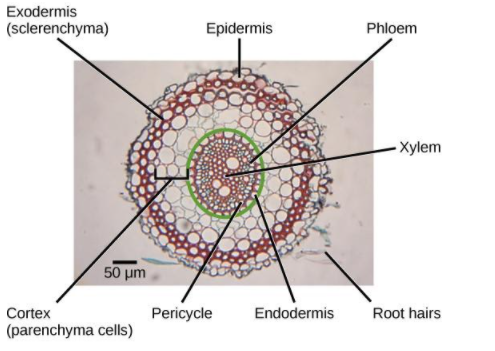
What is the role of epidermis in plants?
Answer
572.1k+ views
Hint: Epidermis is the outer layer of cover that protects the plants. It covers all the parts of the plants like root, stem, leaves, flower, fruit and seed of the plant. It is made of several propodeum layers and its nature varies from plant to plant.
Complete answer:
Epidermis protects all the surface of the plants without any intercellular space in it. Some of plants also possess epidermal hairs to prevent the loss of water from the plants. Epidermal cells are resistant to water and hence it reduces loss of water in the plant. It also stores some chemicals to prevent the insects biting or damaging the plants. In roots, epidermal hairs are present to increase the water uptake in the soil.

Epidermis is also provided with the waxy layer called cutin which serves as the protective barrier in the desert plants by reducing the water loss. It protects all the internal organs and the underlying tissues of the plant. It secretes some of the metabolic compounds which are required for the plant growth.
Note:In leaves and stems, epidermis possess small minute pores called stomata which helps in the process of transpiration. Transpiration is the loss of water from the plant surface. Stomata are useful in the exchange of the gases and the water. These pores are surrounded by the pair of cells called guard cells. These cells are used in opening and closing of the stomata.
Complete answer:
Epidermis protects all the surface of the plants without any intercellular space in it. Some of plants also possess epidermal hairs to prevent the loss of water from the plants. Epidermal cells are resistant to water and hence it reduces loss of water in the plant. It also stores some chemicals to prevent the insects biting or damaging the plants. In roots, epidermal hairs are present to increase the water uptake in the soil.

Epidermis is also provided with the waxy layer called cutin which serves as the protective barrier in the desert plants by reducing the water loss. It protects all the internal organs and the underlying tissues of the plant. It secretes some of the metabolic compounds which are required for the plant growth.
Note:In leaves and stems, epidermis possess small minute pores called stomata which helps in the process of transpiration. Transpiration is the loss of water from the plant surface. Stomata are useful in the exchange of the gases and the water. These pores are surrounded by the pair of cells called guard cells. These cells are used in opening and closing of the stomata.
Recently Updated Pages
Master Class 12 Business Studies: Engaging Questions & Answers for Success

Master Class 12 Economics: Engaging Questions & Answers for Success

Master Class 12 English: Engaging Questions & Answers for Success

Master Class 12 Maths: Engaging Questions & Answers for Success

Master Class 12 Social Science: Engaging Questions & Answers for Success

Master Class 12 Chemistry: Engaging Questions & Answers for Success

Trending doubts
December 10th of 1948 is an important day in the history class 12 sst CBSE

Prove that a parallelogram circumscribing a circle-class-12-maths-CBSE

Dihybrid cross is made between RRYY yellow round seed class 12 biology CBSE

The correct structure of ethylenediaminetetraacetic class 12 chemistry CBSE

What is the Full Form of PVC, PET, HDPE, LDPE, PP and PS ?

The first microscope was invented by A Leeuwenhoek class 12 biology CBSE




